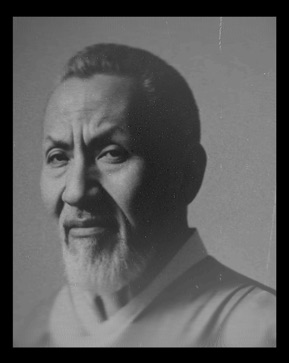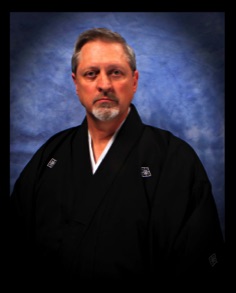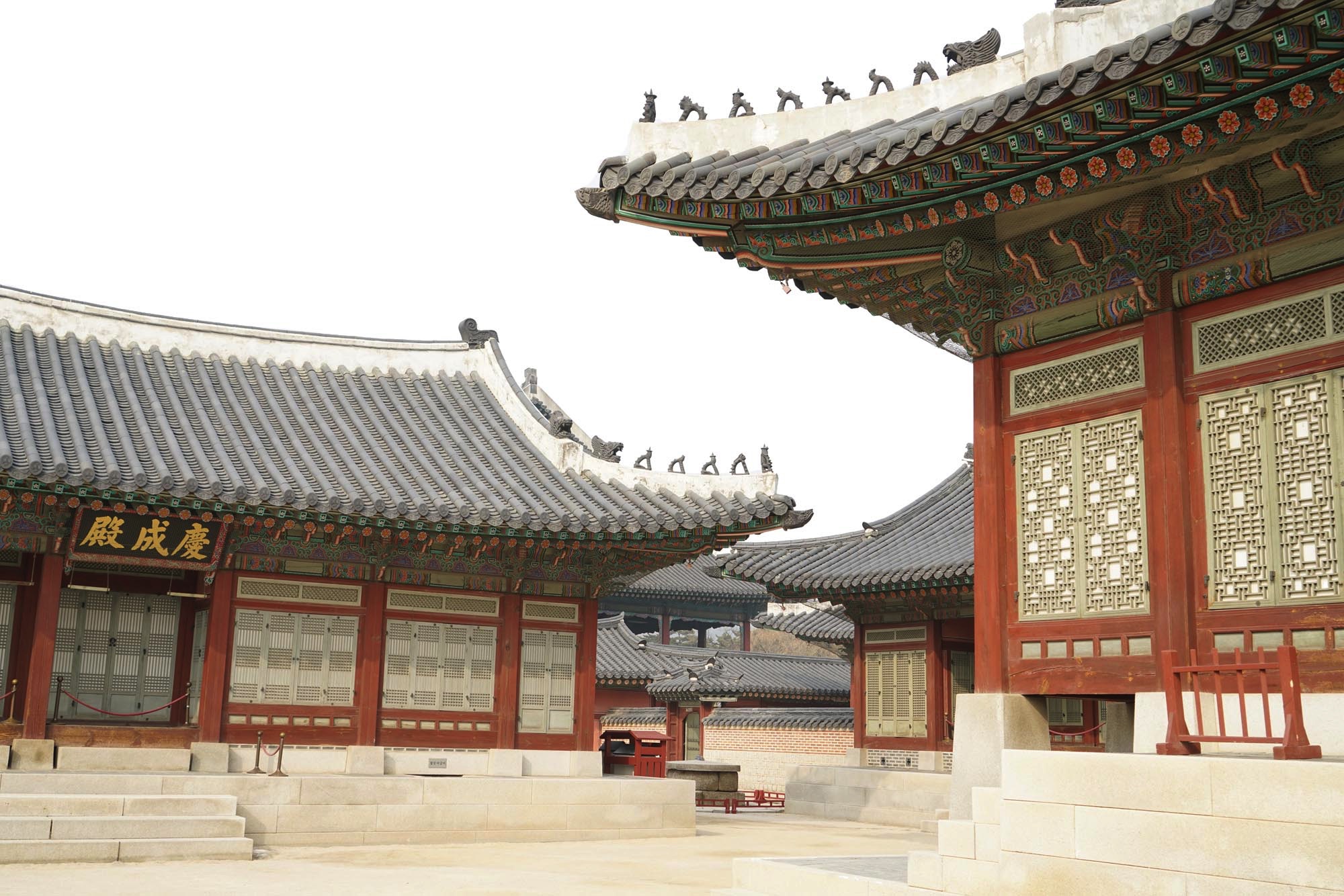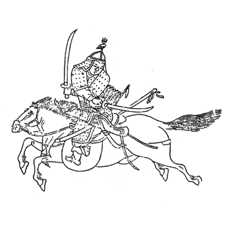
Tracing the Sorimasa Cheol Gwonbeop system from its birthplace in China, to the Korean homeland of its system's founder and the original lineage holders and its journey to western shores.
a
Sorimsa Cheol Gwonbeop System
Chronology
This martial art was founded in the 1700's by Master Chin yeong-ho (1742-1814) and was named "Shaolinsi Chin Ba Mingquan" (Young Forest Temple - Chin Style - Eight - Illuminating - Fists). The foundational teachings Chin trained in, were originally developed in the Henan province of China during the Ming Dynasty (1368-1644). During the mid 1700's the Chin family emigrated to China from Korea.
Family records indicate "...that Master Chin studied the methods of the Tiger, Mantis, Leopard, Monkey and Dragon of 300 years past from central China." These are direct references to the Shaolin based arts where the foundational teachings were originally developed.
The Chin family art, through lineage transmission, was passed on to Lee jin-ho. Chin family records state that Master Lee was "...better of all followers from the land of the Furious Ones (Korea)." Upon Lee's death in 1851 the art was passed on to his son, Lee ki-ho.
Master Lee ki-ho remained in China after his father's death for a period of time. During the late Joseon era (c.1855), he is credited with moving the art and renaming it in Korea to Sorimsa Cheol Gwonbeop (Shaolin Temple - Iron - Fist Method). Gwonbeop is the Korean pronunciation of the Chinese quanfa/chuan-fa (fist method). It is believed that Master Lee traveled to Injie-eup before settling into Yeongdeungpo, Korea. After Lee's arrival in Korea, Wang, a Chinese martial arts master, with personal ties to the Chin family, (style unknown-family records indicate a China Hand stylist), traveled to Yeongdeungpo from China, to train with Lee.
The Iron Fist system scroll (soden) was translated by an Asian Studies Professor at the Center for Asian Studies, University of Colorado, Boulder, Colorado.
The Cheol Gwonbeop system absorbed the Five Commandments (moral laws), known as "Sesok Ogye", authored by the monk Won'gwang Popsa. These commandments are often associated with the Hwarang warriors. Chinese hand forms were blended with the Korean Taekkyeon kicking forms creating a strong system of self-defense.
Master Lee had a daughter that married into the Kim family and had a son, Kim ji-ho, Master Lee's grandson. In 1881, Master Lee died when Kim was one year of age. Master Wang stayed with the family and trained Kim until he was of age and transferred the family art to him. Master Wang sometime later returned to China, presumably. Records are not clear of his travels.
Joseon Era Ends...History Unfolds...
Master Kim witnessed many historic events during his years while living in Korea. The following, overly simplistic summary of events are listed as historical reference.
1897
-Joseon Era ends after over 500 years.
1910-1945
-Japan occupies Korea. Japan's influence actually began in
the late Joseon era.
-Korean culture is destroyed by the Japanese.
-Korea's queen is assassinated in 1895.
-Koreans must learn to speak/write Japanese and assume
Japanese names.
-Korean traditional dress and hair styles are banned.
-Korean traditional martial arts are banned.
-Korea's natural resources are depleted to support the
Japanese war effort.
-Korean men are conscripted into the Japanese military.
-Korean women are used as "pleasure women" within the
Japanese military.
-Korean population experiences higher levels of starvation.
-Japan's domination over Korea ends with Japan's surrender
ending WWII.
1945-1950
-Korea is divided into North/South demarcations. Korea is
occupied by both the United States and the Soviet Union.
1950-1953
-Korean war. Over two million dead with cities and towns
destroyed.
1953
-Both North and South Korea begin their roads back to
national healing and economic, cultural recovery...albeit
in different ways.
Master Kim lived to see all of these events transpire during his lifetime while living in Korea. Yet, after the horrific life events and living conditions he endured, when you examine his writings that have been passed on within this system, his desire was to see the Cheol Gwonbeop system teachings be taught for the betterment of mankind. During this timeframe, Kim met and trained a US Marine by the name of Albert C. Church, Jr., during the Korean war. Church was rotated back stateside in 1952. At that time, Church began supporting Kim's art by teaching it in the United States
along with the jujutsu that he had trained in as a youth.
In 1954 Kim traveled to Japan seeking medical treatment for cancer. In Japanese, the art's name was known as "Shorinji Tekken Ryu...Shaolin Temple Iron Fist System." Kim and Church maintained their communication after Kim moved to Japan. In May, 1967 Kim called for Church to come to study with him in Japan. So consequently, Church moved his family to Japan shortly afterwards. In November, 1967 Kim transferred the Shaolinji Tekken Ryu/Sorimsa Cheol Gwonbeop system to Church, as the new head family, shortly before he died. Kim was the last Korean head family before the art was transferred to Church. While in Japan, Church worked with several Japanese head families, to have the art recognized in Japan, carrying forward a desire that Master Kim wanted to accomplish.
Nippon Kobudo Kamishin Ryu
While living and training in Japan, Church became close friends with Shogo Kuniba, Soke (by succession), of Motobu-ha Shito Ryu Karate-do. Kuniba sponsored Church before the Zen Nippon Kodudo Renmei and Zen Nippon Karate-do Renmei of Kyoto and Osaka, after reviewing the Shorinji Tekken Ryu Soden that Church received from Kim. The board members not only included Kuniba but Yasuhiro Konishi, head family of Shindo Jinen Ryu as well. It was decided, at that time, that the art of Shorinji Tekken Ryu should be renamed as Nippon Kobudo Kamishin Ryu (Japanese, Ancient Martial Way, Godly Heart, System), as recommended by Konishi sensei himself. Therefore, the newly founded name of this art was officially released in 1968. A special scroll was prepared by Kuniba and presented to Church, at that time.
Church also had close contact and training with Okuyama Ryuho, Soke, Hakko Ryu jujutsu. The foundations that Church used for his Kamishin jujutsu training back in the United States were based on elements that Okuyama worked with him on while he was in Japan.
Prior to Church's return to the United States, in 1969, Kuniba presented him with a kanban, (formal teaching authorization sign).
After receiving the authorization and support of Shogo Kuniba, Church returned to the United States to teach the newly formed art of Nippon Kobudo Kamishin Ryu. It was Church's goal for his students to train within the teachings of this “martial way.”
When Soke Church returned stateside, this time as the Sorimsa Cheol Gwonbeop's and Kamishin Ryu's new head family, the system's hierarchical structure began taking shape. At that time, Church named Robert Kelly, his future son-in-law, as the system inheritor and as a soke-dai. Kelly sensei received a document of lineage transmission in 1971.
The organization Church began shaping eventually flourished with over 7,000 registered students. Then in the mid 1970's-timeframe, after a series of events, the organizational structure began to falter. When the dust settled, events found the hombu dojo (headquarters school) closing, and the entire upper level of the organization hierarchy being removed. Church had literally become inaccessible and was not seen for approximately 1 1/2 years. During this time, a number of top-level students stepped away from the art. However, once Church was back on the scene and the hombu re-opened, the residual effects from the confusion that started in the mid 1970's never seemed to disappear.
Then unexpectedly in 1980, Church died.
Ted Petit began his training within Nippon Kobudo Kamishin Ryu in 1971, first training under one of Soke Church's black belt instructors then eventually under Church and Kelly directly. It was Church's goal for his students to train within a combined martial structure, therefore, Petit earned separate black belt rankings under the Sorimsa Cheol Gwonbeop/Shorinji Tekken Ryu/Kamishin Ryu systems. By 1979 Petit moved to Texas. In 1980, he received a late-night phone call from Robert and Linda Kelly informing him of Soke Church's death (Linda Kelly is his oldest daughter).
In late 1995, Robert Kelly signed and sealed a letter of lineage transmission giving Petit full sponsorship, permission and backing to teach and promote the Sorimsa Cheol Gwonbeop/ Shorinji Tekken Ryu system as its Head Family.
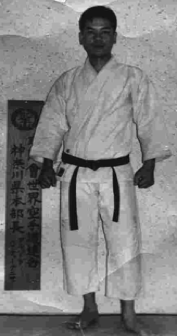
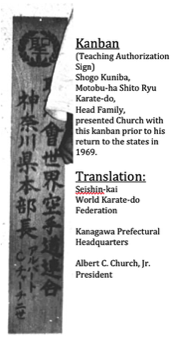
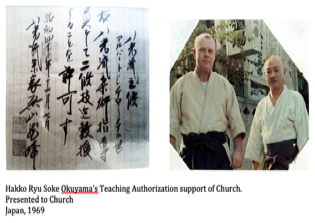
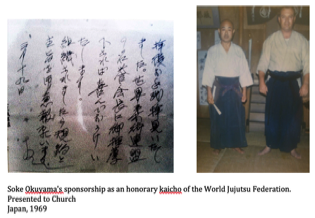
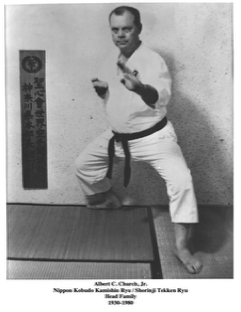
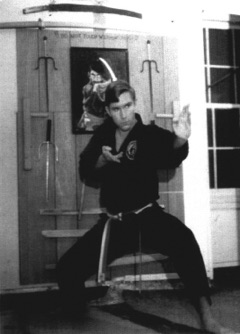
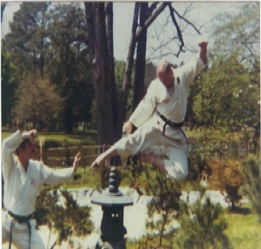
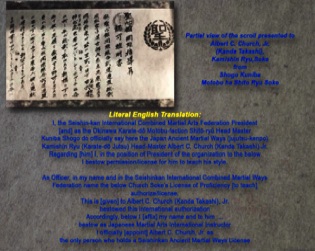
Sorimsa Cheol Gwonbeop
The Iron Fist System of Kim ji-ho
System Chronology
Kim ji-ho, Soji
Sorimsa Cheol Gwonbeop
1880-1967
Kuniba with kanban
Kuniba scroll
Robert Kelly
Ted Petit
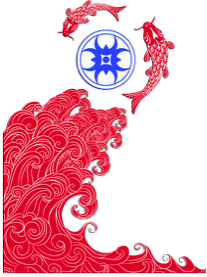
Church with Kelly
